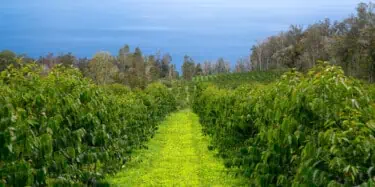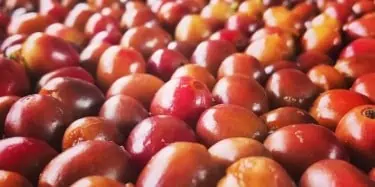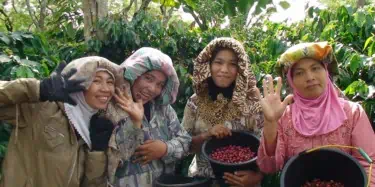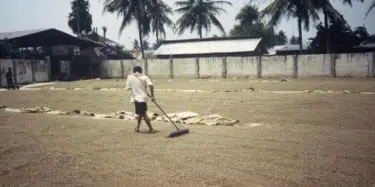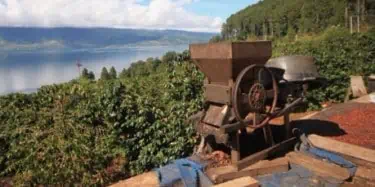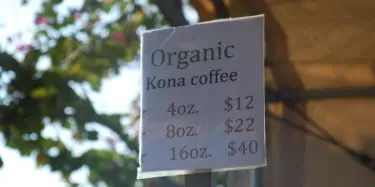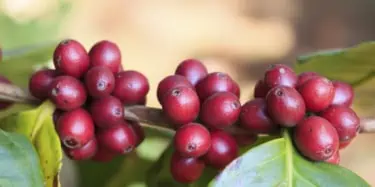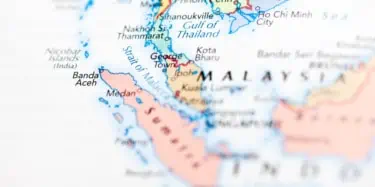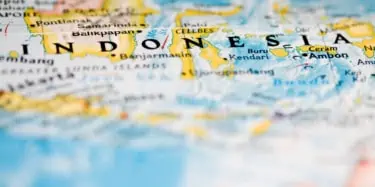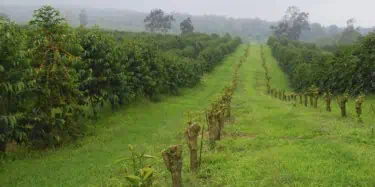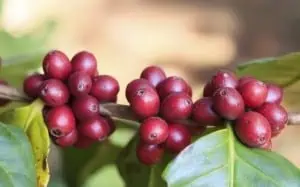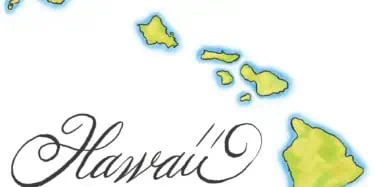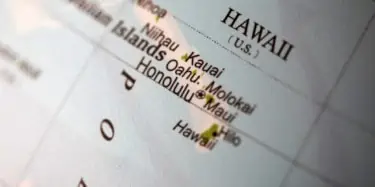When most of us think of Hawaiʻi, we think of perfect beaches, iconic sunsets and unparalleled relaxation. When coffee lovers think of Hawaiʻi, “Kona” is often the first word that comes to mind. But while the Hawaiian Islands are, indeed, a paradise, they’re also a place where coffee is a critical part of the economy — an economy that’s been hammered over the past few years by the
Tasting Reports – Asia-Pacific
Coffee Review has published more than 250 monthly coffee tasting reports since February 1997. The tasting reports below, focusing on coffees from the Asia-Pacific region, appear in reverse chronological order. You may refine your search by using the key word search feature that appears in the page header. The content in tasting reports and associated reviews was correct at the time of publication but may not remain accurate over time.
Hawai’i: A New Wave of Coffee Innovation
The Hawaiian Islands are known the world over for beautiful beaches, diverse microclimates, and both active and dormant volcanoes — pretty much paradise, as the cliché goes. Hawaiian culture is both uniquely American and, in many ways, happily incongruous with mainstream American culture. One island in particular, Hawai'i Island (often called the Big Island), produces the famous, widely
Sumatra: Earth, Chocolate and Change
The pleasures of a fine traditional Sumatra are not quite conventional coffee pleasures. The characteristic layering of chocolate, pungent fruit and earth notes in an exceptional wet-hulled Sumatra may mildly turn off coffee drinkers who enjoy more orthodox coffee pleasures: juicier, sweeter fruit, say, or more citrus and flowers, or a suave balance with no savory earth suggestions at all. But
Learning from Sumatras
I’ve been cupping coffee professionally for less than a year. Ken Davids first hired me at Coffee Review last August, given that my background in food and wine writing, as well as in academia, seemed a good enough calling card to dip into the world of coffee. But, of course, in order to properly do this work, I would need to be trained in cupping, the rigorous sensory evaluation of coffee. While
Elegant Earth: Wet-Hulled Sumatras and One Sulawesi
Wet-hulling is not an obscure Olympics sailing event nor (at least to my knowledge) a special trick in waterskiing or wakeboarding. It is a fruit removal and drying variation that contributes much of the distinct character of traditional Indonesia coffees, particularly those from Sumatra and Sulawesi. It is also practiced on other Indonesian islands, almost everywhere in Indonesia where small
Hawaii 2014: The Classics Rule
When writing about Hawaii coffees – more specifically, Kona coffees – I invariably feel conflicting impulses about whom to take on. Should I attack the many cynical Kona-bashers among the mainland high-end coffee-roasting community who sneer that Hawaii coffees (Kona in particular) are at best ordinary and always overpriced? On the other hand, should I rattle the bars of the sun-and-sand besotted
Subtle Exoticism: Sulawesi and Papua New Guinea
This month’s reviews include coffees from two Indo-Pacific growing regions, the Indonesian island of Sulawesi (formerly Celebes) and Papua New Guinea. We had planned to include coffees from several other Indo-Pacific islands – Java, Bali, East Timor – but we were not able to source enough samples to justify including them. Never mind; we turned up some superb and original coffees from these two
Better and Better: Sumatras 2013
Sumatra coffees continue to amaze. Aside from Ethiopia, I can think of no other origin currently producing fine coffees displaying as much sheer range and distinction of sensory association. But whereas Ethiopia’s range of sensory surprise is owing to a rich store of ancient plant varieties, Sumatra’s range and diversity of sensation is primarily achieved through what would seem to be some simple
Mysterious No More: Sumatra Coffees
Ever since specialty coffee pioneer Alfred Peet popularized Sumatra coffees on the menu of his famous Vine Street store, their pungently fruity, earthy/musty profile has attracted a loyal following among American coffee lovers. Along the way they have been regularly tagged "mysterious," a word also often applied to the seldom-visited Indonesian island they come from. Well, mysterious no more, or
Island Coffees: Hawaii and the Caribbean
This month's reviews consider coffees from two famous island growing regions -- Kona and the Blue Mountains of Jamaica -- together with a handful of coffees from less famous island origins: Puerto Rico, Haiti, the Dominican Republic, plus a scattering of non-Kona Hawaii coffees. The conclusions, rather sadly, are predictable for coffee insiders but perhaps a surprise for more casual coffee
Coffees of Sulawesi, Bali, Java, Flores, East Timor
In beverage-world terms, coffees from Indonesia and East Timor could be considered the single-malt whiskies of coffee. Generally absent are the tart fruit and sweet floral notes of the finest pure, high-grown, wet-processed coffees of Latin America and East Africa. In their place are rich, ambiguous notes of nut, aromatic wood, sometimes earth, sometimes a chocolaty fermented fruit. Most of these
Fourteen Covers of a Classic Tune: Mocha Java Blends
Around 1740 Europeans had a rather limited menu of coffees to choose from: Mocha, the world's original commercial coffee from what is now Yemen, and Java, a recent introduction by the Dutch from their colony in the Pacific. Inevitably, these two coffees came together to form the world's first blend. In the years following, other, now more famous, coffees from Latin America began to fill out
Papua New Guinea: Promise Only Partly Fulfilled
Three or four years ago I was looking out the window of a small airplane banking into a short (very short) grass airstrip serving a coffee-growing village of Papua New Guinea. Everything that makes the highlands of Papua New Guinea one of the most promising coffee growing regions in the world was spread out beneath me. Among all of the coffee terroirs of the world, the lush highland valleys of
Sweetness and Earth: Java, Sulawesi, Bali, Timor
One starting point for understanding the intriguing coffees that emerge from the islands of Indonesia (Sumatra, Sulawesi, Java, Bali) and Timor is the prosaic issue of processing, or how the fruit is removed from the coffee seeds and how they are dried. The famous "earthy" character of traditional Sumatra and Sulawesi coffees clearly derives from a peculiar prolonged sequence of drying acts
Hawaiian Coffees 2006: Not This Year
Disappointment implies history. We can only be disappointed if past successes make us expect more good things than actually come our way in the present. Such is the case with Coffee Review's latest revisiting of Hawaiian coffees. First disappointment: A rather lackluster collection of coffees from the famous Kona growing region, with only one of the twenty-two 100% Kona samples we collected
Now More Than Ever: Traditional Coffees of Sumatra and Sulawesi
It may seem a bit ghoulish to carry on about the pleasures of Sumatra coffee when communities not very far from the Sumatra growing regions are suffering through a catastrophe of unimaginably horrific proportions. However, as stark as the contrast may be between a coffee cup and news footage of upended cars, shattered houses and body bags, appreciating Sumatra coffee can only help Sumatrans. The
Sumatras
It is unlikely that anyone would put Sumatra up as the finest of the world's coffee origins, but many of us would select it as one of the most challenging and interesting. That challenge and interest is situated right in the cup, by the way. You don't need to glamorize traditional Sumatras with false travelogue romance. Not only does every lot of traditionally processed Sumatra taste different
Konas and Other Hawaiis
Kona coffee, grown on a narrow band of hard-scrabble lava terrain that meanders along the mountainside above the resort complexes and splendid western coastline of the Big Island of Hawaii, is a singular coffee origin in many respects. A combination of demand and scarcity have made one of the worlds most expensive coffees. It is a favorite among American and Japanese consumers, who associate it
Sulawesi Coffees, a Cup on the Wild Side
The finest traditional coffees Sulawesi and Sumatra can be a provocative pleasure but finding a good Sulawesi or Sumatra is a true test of a coffee buyer's taste and persistence. The eight traditionally processed Sulawesis reviewed here were bought by the right buyers for the right reasons. They are a splendid set of coffees, working shifting, always surprising variations on the general Sulawesi
1999 Papua New Guineas, Timors, and a Lone Java
An assortment of intrigues and questions animate this month's panel cupping of coffees from the eastern islands of the Malay Archipelago: Papua New Guinea, Timor, and Java. Among those questions and intrigues: Papua New Guinea estate-grown coffees are among the up-and-coming challengers in the world of fine coffee. How good are the best estate-grown Papua New Guineas? Can they match the drama











